How to Grow Cigar Plants: A Beginner’s Guide
- March 6, 2024
- 0 comment
Cigar plants, known scientifically as Cuphea ignea, are a popular choice for gardeners looking to add a unique and exotic touch to their gardens. Native to Mexico and parts of the West Indies, these plants are renowned for their tubular, reddish-orange flowers which bear a striking resemblance to lit cigars. Growing cigar plants can be a rewarding experience, and with the right care, they can thrive and add vibrant color to your outdoor space.
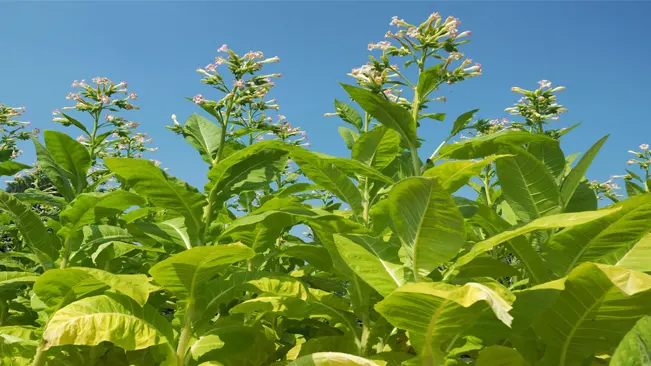
Benefits of Cigar Plants
| Benefit | Description |
|---|---|
| Aesthetic Appeal | Cigar plants have unique, tubular flowers resembling lit cigars, adding an exotic and vibrant touch to gardens. |
| Attracts Pollinators | These plants are excellent for attracting hummingbirds, butterflies, and bees, aiding in the pollination of your garden. |
| Easy to Grow | Cigar plants are relatively easy to care for, making them suitable for both novice and experienced gardeners. |
| Versatility in Landscaping | Ideal for borders, containers, and hanging baskets, they offer flexibility in garden design and landscaping. |
| Drought Tolerance | Once established, they are fairly drought-tolerant, requiring less frequent watering compared to other plants. |
| Long Blooming Period | They have a long flowering season, often from early summer to the first frost, providing continuous color in the garden. |
| Low Maintenance | Requiring minimal pruning and care, cigar plants are a low-maintenance option for busy gardeners. |
| Pest Resistant | Generally resistant to pests, reducing the need for chemical treatments. |
| Adaptability | Can adapt to a variety of soil types as long as they are well-draining. |
| Overwintering Potential | In cooler climates, they can be overwintered indoors, allowing gardeners to preserve the plants for the next season. |
List on How To Grow Cigar Plants
- Choosing the Right Location
- Soil and Planting
- Planting Procedure
- Watering and Feeding
- Pruning and Maintenance
- Pests and Diseases
- Overwintering
- Propagation
Choosing the Right Location
Cigar plants prefer a sunny location with well-draining soil. They thrive in full sun but can tolerate partial shade. If you’re planting them in a region with very hot summers, a spot with afternoon shade can prevent the plants from getting scorched.
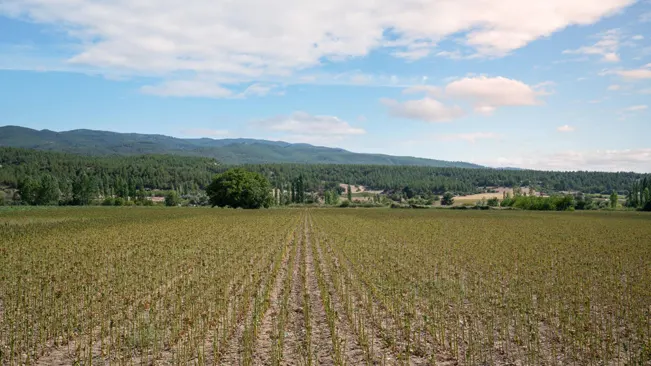
- Full Sun: Cigar plants perform best in full sun, which means they need direct sunlight for at least 6 to 8 hours a day. This level of sunlight is crucial for the plants to produce abundant and vibrant flowers. The direct sun exposure also contributes to the overall health of the plant, promoting strong and sturdy growth.
- Intensity of Sunlight: The intensity of sunlight varies depending on geographic location and time of the year. In areas closer to the equator or during peak summer months, the intensity can be significantly higher. This is important to consider because, while cigar plants love sunlight, excessively intense sun can be harmful.
Soil and Planting
The ideal soil for cigar plants is loamy and rich in organic matter. Ensure good drainage as these plants do not like to sit in waterlogged soil. When planting, space the plants about 12-18 inches apart to allow enough room for growth.

Understanding the Ideal Soil Type
- Loamy Soil: This type of soil is ideal for cigar plants. Loam is a mixture of sand, silt, and clay, offering a balance of drainage and nutrient retention. It’s well-aerated yet holds moisture and nutrients well, which is essential for the healthy growth of cigar plants.
- Organic Matter: Incorporating organic matter into the soil improves its structure, drainage, and nutrient content. Adding compost, well-rotted manure, or peat moss can enhance the fertility and water-holding capacity of the soil, benefiting the plant’s growth.
Ensuring Good Drainage
- Avoid Waterlogging: Cigar plants are susceptible to root rot if left in waterlogged soil. It’s crucial to ensure that the soil drains well. If you’re planting in a garden bed that doesn’t drain well, consider raising the bed or amending the soil with sand or organic material to improve drainage.
- Container Planting: When growing cigar plants in containers, use a potting mix designed for container planting, which typically ensures good drainage. Also, make sure the pots have drainage holes to allow excess water to escape.
Planting Procedure
Understanding the Importance of Proper Spacing
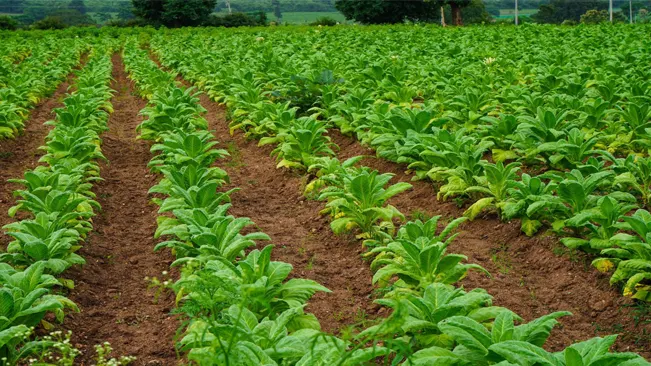
- Adequate Growth Room: The recommendation to space cigar plants 12-18 inches apart is crucial. This spacing ensures each plant has sufficient room to grow to its full size without being hindered by neighboring plants. Adequate space helps in developing a strong root system and a healthy, bushy foliage.
- Nutrient Access: Proper spacing ensures that each plant has ample access to the nutrients in the soil. When plants are too close, they compete for these resources, which can lead to stunted growth and weaker plants.
- Air Circulation: Good spacing also promotes better air circulation around each plant. This is important for reducing the risk of fungal diseases, which can occur in crowded, damp conditions.
Depth and Planting Technique
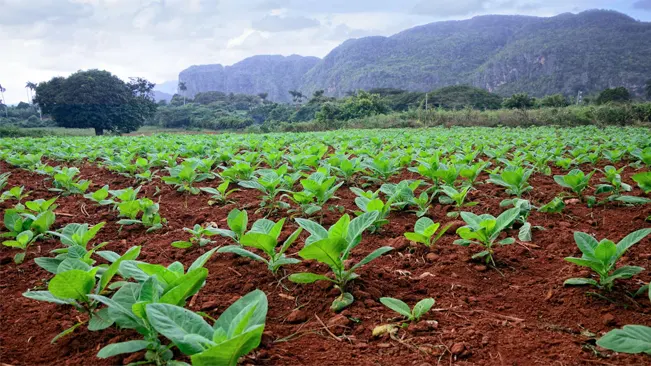
- Maintaining Nursery Depth: It’s vital to plant cigar plants at the same depth they were in their nursery container. Planting too deep can cause the stem to rot, while planting too shallow can expose the roots to air and hinder establishment.
- Preparing the Hole: Dig a hole that’s slightly larger than the root ball of the plant. This extra space is important for allowing the roots to spread out easily in their new environment.
- Planting the Cigar Plant: Carefully remove the plant from its nursery pot, being cautious not to damage the roots. Place the plant in the center of the hole. Gently fill in the hole with soil, ensuring there are no air pockets. Air pockets can cause roots to dry out and hinder proper growth.
- Firming the Soil: After placing the plant in the hole and filling it with soil, gently press down on the soil around the plant. This helps in making contact between the roots and the new soil and also stabilizes the plant.
- Watering After Planting: Watering is an essential step immediately after planting. It helps to settle the soil around the roots and provides necessary hydration for the plant to start adapting to its new environment. Ensure the water penetrates deep into the soil to encourage deep root growth.
Post-Planting Care
- After planting, keep an eye on the soil moisture. Cigar plants prefer consistently moist soil, especially in the first few weeks after planting when they are establishing themselves. However, avoid over-watering, as this can lead to root rot.
Watering and Feeding
Regular watering is crucial, especially during dry spells. Keep the soil consistently moist but not waterlogged. Cigar plants benefit from a balanced, slow-release fertilizer applied in the spring and again in mid-summer.
Watering Practices

- Consistency is Key: Cigar plants prefer consistent moisture levels in the soil. The goal is to maintain a balance where the soil is neither too dry nor too soggy. Over-watering can lead to root rot, while under-watering can stress the plant, leading to drooping leaves and fewer flowers.
- Monitoring Soil Moisture: It’s important to check the soil moisture regularly. A simple way to do this is by sticking your finger about an inch into the soil. If the soil feels dry at that depth, it’s time to water.
- Watering Frequency: The frequency of watering will depend on several factors such as the climate, the time of the year, and whether the plant is in the ground or in a container. Plants in containers generally require more frequent watering than those in the ground.
- Method of Watering: When watering, aim to water at the base of the plant, avoiding wetting the leaves. This helps reduce the risk of fungal diseases. Also, it’s better to water deeply and less frequently, encouraging the roots to grow deeper into the soil.
Feeding (Fertilization)
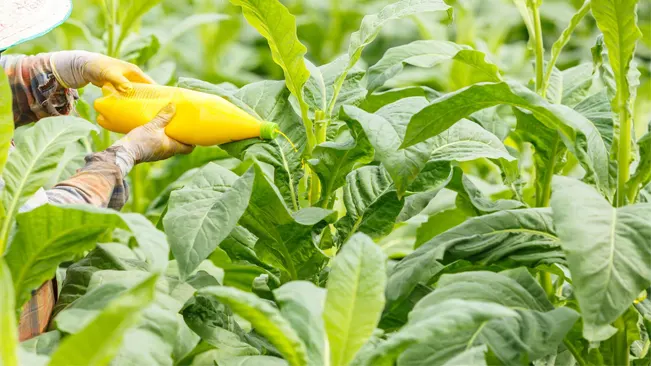
- Type of Fertilizer: Cigar plants benefit from a balanced, all-purpose fertilizer. Look for something with an NPK (Nitrogen, Phosphorus, Potassium) ratio that is balanced, like 10-10-10 or 20-20-20.
- Application Timing: The ideal times for fertilizing are in the spring as the plant starts its active growth, and then again in mid-summer to support continued blooming. Avoid fertilizing late in the season as this can encourage new growth that might be damaged by early frosts.
- Application Method: Apply the fertilizer according to the instructions on the package. If you’re using a granular fertilizer, spread it evenly around the base of the plant and then water thoroughly to help the nutrients seep into the soil.
- Avoid Over-Fertilization: While feeding is important, too much fertilizer can be detrimental. Excessive feeding can lead to lush leaf growth at the expense of flowers, and can even damage the plant.
Pruning and Maintenance
Prune regularly to promote bushy growth and remove any dead or faded flowers. This will encourage more blooms and maintain the plant’s attractive appearance. In regions where cigar plants are treated as annuals, they do not require extensive pruning.
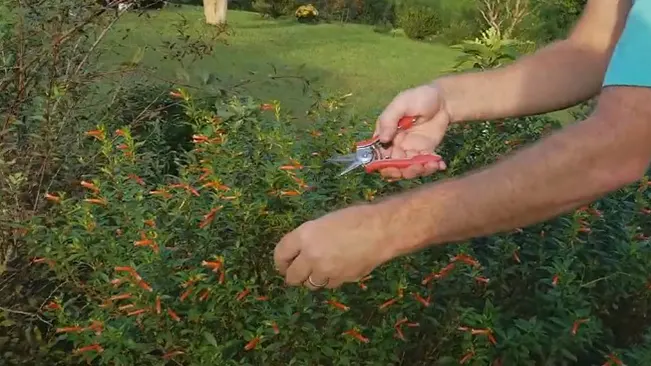
The Importance of Pruning
Pruning is a crucial aspect of maintaining the health and appearance of cigar plants. It serves several purposes:
- Promoting Bushier Growth: Regular pruning encourages the plant to grow denser and bushier. This is because cutting back the plant stimulates new growth from the base and along the stems, leading to a fuller appearance.
- Enhancing Flower Production: By removing spent or faded flowers (a process known as deadheading), the plant is encouraged to produce more blooms. This is because the plant redirects its energy from seed production to the creation of new flowers.
- Maintaining Plant Health: Pruning helps in removing any diseased or damaged parts of the plant, preventing potential spread of disease or pest infestation.
How to Prune Cigar Plants
- Use the Right Tools: Always use sharp, clean pruning shears or scissors. This ensures clean cuts that heal quickly and reduces the risk of spreading disease.
- Timing: The best time to prune cigar plants is in late winter or early spring, just as new growth begins. However, deadheading can be done throughout the blooming season.
- Technique for Pruning:
- For general pruning, cut back the stems to a node (a point where leaves grow out of the stem). This will encourage new branches to sprout from that point.
- When deadheading, simply snip off the faded flowers at their base. Be careful not to damage the new buds or growth.
- Shaping the Plant: While pruning, you can also shape the plant to your desired form. If some branches are growing too long or in unwanted directions, trim them to maintain the shape.
Maintenance Tips
- Regular Watering: While cigar plants are relatively drought-tolerant, they do best with consistent moisture, especially during the growing and blooming periods.
- Fertilization: Feed cigar plants with a balanced, slow-release fertilizer in the spring and possibly again in mid-summer to support vigorous growth and flowering.
- Monitoring for Pests and Diseases: Regularly check for signs of pests or diseases. Early detection and treatment are key to maintaining plant health.
Pests and Diseases
Cigar plants are relatively hardy and not prone to many pests or diseases. However, keep an eye out for common garden pests like aphids and spider mites. Treat any infestations promptly with appropriate organic or chemical treatments.
Common Pests
- Aphids: These small, soft-bodied insects can be found on the undersides of leaves, sucking the sap from the plant. They can cause the leaves to curl, wilt, or yellow. Aphids also secrete a sticky substance called honeydew, which can attract ants and lead to sooty mold.
- Spider Mites: These tiny pests are hard to see with the naked eye but can cause significant damage. They create fine webs on the plant and feed on the leaves, leading to yellowing, bronzing, or a general dull look of the foliage.
- Whiteflies: Similar to aphids, whiteflies feed on plant sap and excrete honeydew. They are typically found on the underside of leaves and can cause yellowing or wilting.
Managing Pests
- Regular Inspection: Regularly check your plants for signs of pests, especially under the leaves.
- Natural Predators: Introducing or encouraging natural predators like ladybugs and lacewings can help control aphid populations.
- Water Spray: A strong jet of water can dislodge aphids and spider mites from the plant.
- Insecticidal Soaps and Oils: These are effective against many pests and are less harmful to beneficial insects and the environment than chemical insecticides.
- Chemical Treatments: In severe cases, chemical pesticides can be used, but it’s essential to follow the manufacturer’s instructions and consider the impact on beneficial insects and the surrounding environment.
Common Diseases
While cigar plants are generally disease-resistant, they can occasionally suffer from a few problems, especially when grown in poor conditions.
- Root Rot: This can occur in waterlogged soil. Ensure good drainage to prevent it.
- Powdery Mildew: Appears as a white powdery substance on leaves, typically in humid conditions. Improve air circulation and reduce humidity to manage it.
- Leaf Spot: Caused by fungal or bacterial infections, resulting in spotted leaves. Proper spacing of plants for good air circulation and avoiding overhead watering can help prevent this.
Preventive Measures for Diseases
- Proper Watering: Avoid overwatering and water at the base of the plant to keep the foliage dry.
- Good Air Circulation: Ensure plants are not overcrowded to promote air movement.
- Clean Gardening Practices: Regularly clean your gardening tools and remove any fallen debris or diseased plant material from around your cigar plants.
Overwintering
In cooler climates, cigar plants can be overwintered indoors. Before the first frost, transplant them into pots if they are in the ground and move them indoors. Keep them in a sunny window and water sparingly throughout the winter.
Preparing for Overwintering
- Timing: The process starts before the first frost of the season. Pay attention to weather forecasts to determine the right time to bring your plants indoors.
- Transplanting: If your cigar plants are in the ground, carefully dig them up, trying to disturb the roots as little as possible. Select a pot that is large enough to accommodate the root ball and has good drainage holes. Use a well-draining potting mix to repot the plant.
- Pest Check: Before bringing the plants indoors, inspect them for pests. Treat any infestations to avoid bringing pests into your home.
Indoor Care During Winter
- Light: Place the plants in a location where they’ll receive plenty of light, such as a south-facing window. If natural light is insufficient, consider using grow lights to supplement.
- Watering: Watering needs decrease during the winter months. Allow the top inch of soil to dry out between waterings. Overwatering can be more detrimental during this dormant period.
- Temperature: Keep the plants in a cool but not cold room. Temperatures around 50-60°F (10-15°C) are ideal. Avoid placing plants near heat sources or drafts.
- Humidity: Indoor heating can reduce humidity levels, which might not be ideal for cigar plants. Increase humidity around the plants by placing a tray of water near them, using a humidifier, or misting the plants occasionally.
- Pruning: Pruning is not usually necessary during overwintering unless you’re trying to control the size or shape of the plant. If pruning is needed, do it sparingly.
Preparing for Spring
As winter ends and temperatures start to rise, it’s time to prepare your cigar plants for moving back outdoors.
- Gradual Transition: Slowly acclimatize your plants to outdoor conditions. Start by placing them outside in a shaded area for a few hours each day, gradually increasing their time outdoors over a week or two.
- Watering: As the plants adjust to being outdoors and begin new growth, increase watering frequency. Ensure the soil remains moist but not waterlogged.
- Fertilization: Once the plant shows new growth, you can start applying a balanced fertilizer to support its development.
Propagation
Cigar plants can be propagated from seeds or stem cuttings. For seeds, start them indoors about 6-8 weeks before the last frost date. Stem cuttings can be taken in late summer and rooted in a moist potting mix.
Propagation from Seeds
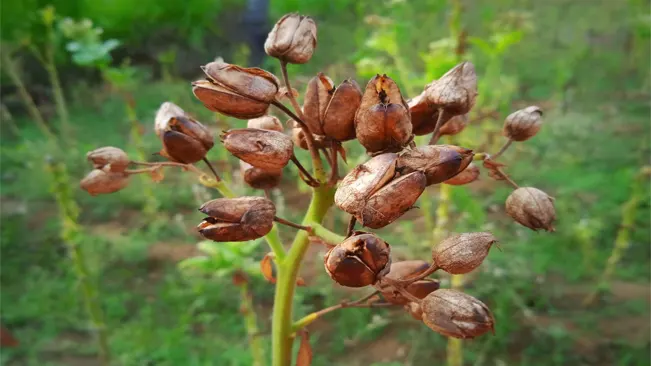
- Timing: Starting seeds indoors is crucial, especially in cooler climates. Begin the process 6-8 weeks before the expected last frost date. This timing allows the seedlings to grow strong enough to be transplanted outdoors once the danger of frost has passed.
- Seed Preparation: Cigar plant seeds are small, so handle them with care. No pre-treatment like soaking is required for these seeds.
- Sowing: Use a seed-starting mix in a tray or small pots. Sow the seeds lightly on the surface, as they need light to germinate. Cover them with a very thin layer of soil or simply press them gently into the soil without covering.
- Light and Temperature: Place the tray in a warm location with plenty of indirect light. The ideal germination temperature is around 70-75°F (21-24°C). You can use a heat mat to maintain this temperature if necessary.
- Watering: Keep the soil consistently moist but not waterlogged. Using a spray bottle to mist the soil can prevent overwatering and disturbing the tiny seeds.
- Germination: Seedlings usually appear in 1-3 weeks. Once they emerge, ensure they receive plenty of light, either by natural or artificial means, to prevent them from becoming leggy.
- Transplanting: When seedlings are big enough to handle (typically when they have a couple of sets of true leaves), transplant them into individual pots. Harden them off gradually before moving them outdoors.
Propagation from Stem Cuttings
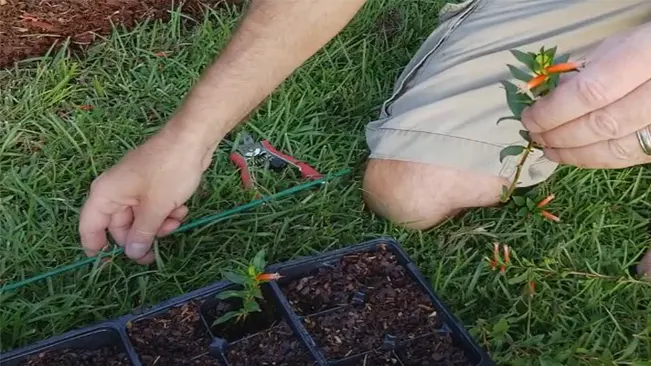
- Best Time: The ideal time to take stem cuttings is in late summer. At this point, the plant has plenty of mature growth from which to take cuttings.
- Selecting Cuttings: Choose healthy, non-flowering stems for cuttings. Cuttings should be about 3-6 inches long and taken just below a leaf node.
- Preparation: Remove the lower leaves from the cutting, leaving only a few at the top. If the leaves are large, you can cut them in half to reduce water loss.
- Rooting Medium: Plant the cuttings in a pot filled with a moist potting mix or a mix of peat and perlite. Stick the cut end into the soil, ensuring a few leaf nodes are buried.
- Creating Humidity: Cover the pot with a plastic bag or place it in a mini greenhouse to create a humid environment, which encourages rooting.
- Care for Cuttings: Place the pot in a bright spot with indirect sunlight. Keep the soil consistently moist but not waterlogged. Rooting typically occurs in 2-4 weeks.
- Transplanting: Once roots are established, and new growth appears, gradually acclimate the plant to less humid conditions before transplanting them to their final location.
Conclusion
Growing cigar plants can be a delightful addition to any garden. Their unique appearance and vibrant blooms make them a focal point in any outdoor space. By following these simple tips on care and maintenance, you can enjoy the beauty of cigar plants throughout the growing season.
FAQs (Frequently Asked Questions)
- What is the best location to plant cigar plants?
Cigar plants thrive in full sun but can tolerate partial shade. Choose a location that receives at least 6 hours of sunlight daily and offers protection from harsh afternoon sun in very hot climates. - What type of soil do cigar plants prefer?
They prefer well-draining, loamy soil rich in organic matter. The soil should retain moisture without becoming waterlogged. - How often should I water cigar plants?
Water regularly to keep the soil consistently moist, especially in dry conditions. However, avoid over-watering, as this can lead to root rot. - Do cigar plants need fertilizer?
Yes, feed them with a balanced, slow-release fertilizer in early spring and again in mid-summer to encourage healthy growth and flowering. - How far apart should I plant cigar plants?
Space them about 12-18 inches apart to allow enough room for growth and air circulation. - Are cigar plants susceptible to pests or diseases?
They are relatively pest-resistant, but keep an eye out for common garden pests like aphids and spider mites. Use appropriate treatments if infestations occur. - Can cigar plants be grown in containers?
Absolutely, cigar plants do well in containers. Ensure the container has good drainage and use a quality potting mix. - How do I prune cigar plants?
Regular pruning isn’t typically necessary, but deadheading (removing spent flowers) can encourage more blooms. Prune back in late winter or early spring to promote bushy growth. - Can I overwinter cigar plants?
In cooler climates, cigar plants can be overwintered indoors. Before the first frost, move them to a sunny spot inside and reduce watering. - How do I propagate cigar plants?
Cigar plants can be propagated from seeds or stem cuttings. For seeds, start indoors before the last frost. Stem cuttings can be taken in late summer, rooted in a moist potting mix.

Kristine Moore
Forestry AuthorI'm Kristine Moore, a seasoned garden landscaping professional with over 30 years of experience. My extensive career has been dedicated to transforming outdoor spaces into stunning, sustainable landscapes. With a deep understanding of horticulture, design principles, and environmental stewardship, I have become a respected figure in the field, known for creating harmonious, visually appealing, and eco-friendly gardens. My commitment to excellence and continuous learning in landscaping trends and techniques has solidified my reputation as an expert in garden design and implementation.













Leave your comment